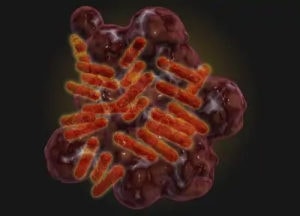• Indirect testing, and therefore useful when the pathogens are hiding, but eliciting an immune response.
• Active infection may be indicated when either IgM only, IgM and IgG, or IgG (≥ 160) antibodies are present.
$160.00
The Rickettsia Immunofluorescent Assay (IFA) is designed to detect Rickettsia-specific antibodies in human serum. For diagnostic purposes, IFA test results should be used in conjunction with other data available to the diagnosing physician.
The Rickettsia IFA is used to detect antibodies to Rickettsia species in human serum. These species include R. ricketsii and R. typhi, known to cause Rocky Mountain Spotted Fever and Murine Typhus, respectively. Titers rise during the first two-to-four weeks of illness and decline over the next six-to-12 months. In patients with previously high titers, titers of less than 160 may indicate a resolving infection. If the IFA result is negative but the clinical symptoms are present, PCR testing is suggested.

Principle
The Rickettsia IFA assay is a two-stage sandwich assay, based upon an antigen-antibody complex formation in the following steps:
Tube / Specimen Requirements
1 SST/ minimum volume 0.5mL serum
CPT Code(s)
86757 x2
Sample Report
View
Early Disease, Late Disease
Test MethodologyIFA
Available in New YorkYes
• Indirect testing, and therefore useful when the pathogens are hiding, but eliciting an immune response.
• Active infection may be indicated when either IgM only, IgM and IgG, or IgG (≥ 160) antibodies are present.
IgM
< 20 Negative
20 May or may not indicate active infection.
≥ 40 Indicates active infection.
IgG
< 40 Negative
40 to < 160 May or may not suggest active infection. In patients with previously high titers, such titers may indicate resolving infection.
≥ 160 Indicates active infection.
The first step in getting tested with IGeneX is to order a collection kit. Choose between a Blood, Urine, or Miscellaneous kit.

1.800.832.3200
For the most up to date and accurate information and articles about ticks and tick-borne diseases, please visit Tick Talk Resource.
Enter your email address to receive periodic marketing communications from IGeneX.